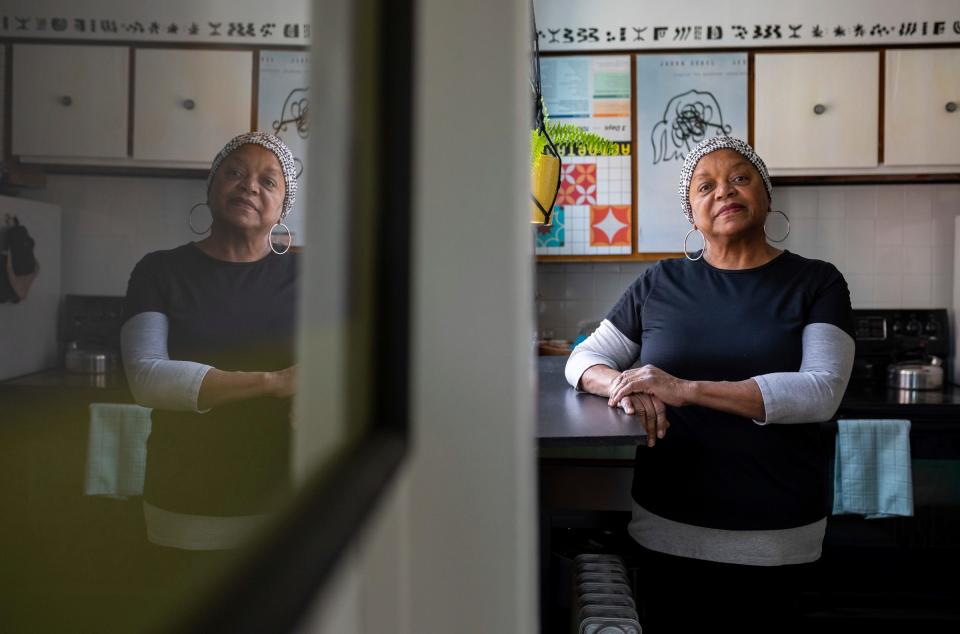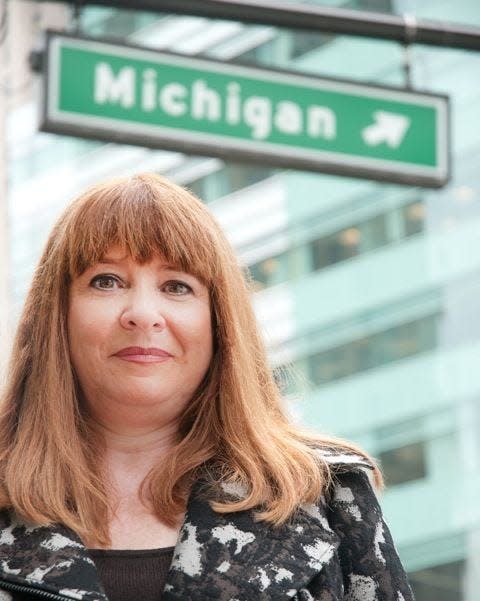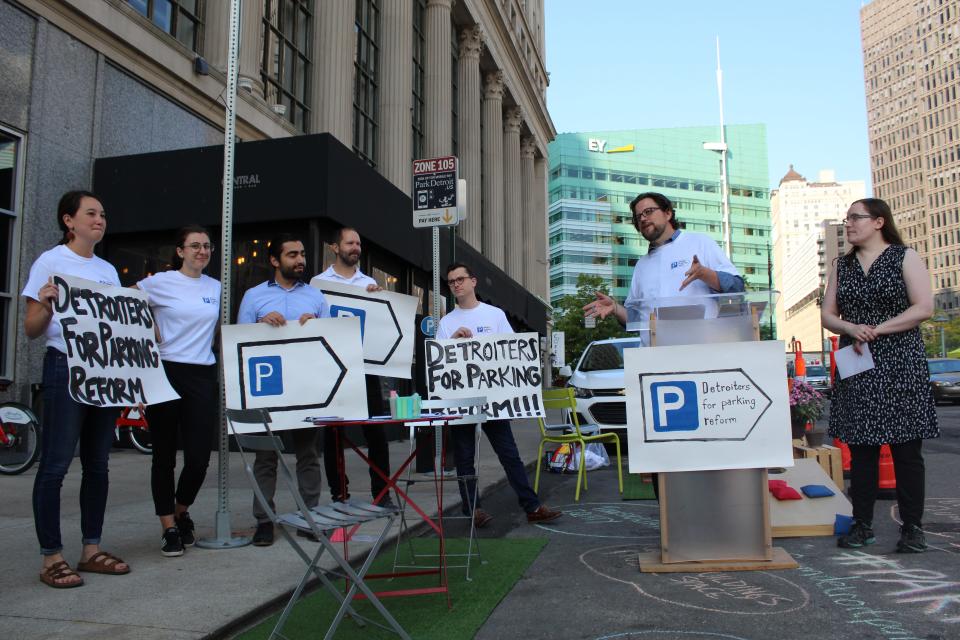City Council districts gave Detroiters a point person, but feelings are mixed 10 years later
Pat Beard didn't even try to contact Detroit City Council members before the district model took effect because she was unsure of who might help.
More than 10 years ago, Detroit City Council operated through an at-large system, meaning council members represented Detroit as a whole, not a specific district where they also lived. Although some argue it encouraged officials to look at issues from a citywide perspective, residents would sometimes play phone tag with the hope of reaching one of the nine members when they needed help. It left some apathetic.
“I knew who the council people were, but if I was having a problem, or the neighbors were having a problem, we usually just kind of got together and solved it. Because the way the system was set up, you really did not know who to contact,” Beard said. “Most of us have had the feeling that there was no accountability.”

Beard would ask herself, “Who do I contact? All of them? One or two of them?” and she’d scratch her head wondering whether council members made decisions based on residents’ needs. Beard said she rarely saw members meet with residents unless an election was near.
Drawing the new council district maps
Detroit City Council is undergoing redistricting, a City Charter-mandated process required every 10 years. Five maps were created and districts are equally divided based on population from the latest census results. Each will hold at least 90,000 residents. Districts must contain as close to an equal population as possible and be as compact and contiguous as possible. Detroit’s east side has seen the most population loss since the last census.
City Planning Commission Director Marcell Todd said the city should try to avoid district boundaries that would split voting precincts to prevent confusion among voters. Precincts were consolidated several times from 450 to 400 in recent years, and City Clerk Janice Winfrey warned officials that confusing residents could disenfranchise voters.
City Council is expected to adopt a newly drawn map by the end of January, as recommended by the city's law department. In the meantime, officials are soliciting resident feedback.
The timeline would allow room to address possible legal challenges to the newly adopted maps, provide the elections department enough time to prepare for the next election and allow candidates to maintain primary residence in their district for one year, which is required by the city charter, before the November 2025 citywide election, Todd added. The new district lines would go into effect after the election.
In the last 10 years, with a direct representative to contact, Beard said that she has had mostly positive experiences.
"It’s still a lot easier to have a particular person that I can contact, whether to say, 'Kudos to you,' or, 'What the hell are you doing?' That to me is still of great benefit. I would not want to go back to the old system," Beard said.
Prior to districts, a substantial number of council members lived near one another, versus the current setup, which requires them to live in their district. Living across Detroit had a direct impact on how people voted, said Sheila Cockrel, who served four terms as an at-large city council member before districts formed.
'It's not worse' and didn't solve corruption
“That was one of the weaknesses pointed out as a reason to go to districts, so neighborhoods would be represented,” Cockrel said.
The genesis of the district system stemmed from citywide corruption and was intended to create a sense of ownership by officials of different communities, along with lending residents a voice in policymaking, Cockrel said. But it did not entirely pan out. The structure made it easier for outlying voices with a specific agenda to be heard.

“But that’s how politics works. It’s not a critique of people, but that’s what’s going to happen in this kind of system,” Cockrel said. “I do not think this has been transformational. It’s not worse. And it’s not like we’re in a less good place than at-large.”
In 2009, a group dubbed "Detroiters for Council by District" was on a mission to change the system, which later led to the Proposal D ballot question of whether the charter should be amended to incorporate council by district, including seven members with district residency and two elected at-large.
Longtime Detroit resident Francis Grunow helped lead the charge after residents sought more accountability amid the city's battle with public corruption.
“An all at-large model was problematic. If you have nothing but at-large, you’re liable to have people run on name recognition alone, and there’s not really a sense of local accountability. At that time, there was a sense of people taking advantage of that," Grunow said.

Changing the system did not dissolve corruption. Councilmembers Gabe Leland and Andre Spivey resigned last term after being convicted of various charges, and two other council members were under federal investigation.
“I think it’s about the quality of people no matter what the system is. Inherent to the districts model is this idea that you can have people who can run on a local track record, people that are known in a smaller geography with lower stakes. It allows for a wider swath of community in a localized community to elect someone,” Grunow said.
How the current district system was established
"The change to districts allowed people in what would become District 6 to elect the first member from a (Latina) background. ... I think that’s important. Representation matters and I don’t know if that would’ve happened with an all at-large model,” Grunow said.
Detroit ran on the district model before 1918. The switch to the at-large system was driven by a municipal reform movement that furthered at-large elections and relatively small numbers of council members, according to the Citizens Research Council of Michigan.
Jenice Mitchell Ford, chairwoman of the 2009-12 Charter Revision Commission, said commissioners decided the number of districts based on population. Commissioners researched government models in other cities including New York, Chicago and Columbus, shown in a 2009 memorandum through the Citizens Research Council of Michigan, and factored in a hybrid model of district and at-large seats.
"That was a real conversation. Some people wanted nine (districts), some wanted 11, some wanted five. Seven seemed like the right number based on population," Ford said. "People wanted a little bit more accountability and felt like with there being a full council at-large, there was nobody you could go to and hold accountable for your area."
Criticism of 'unresponsive' members
Russ Bellant, former Detroit library commissioner who has lived in the city for 50 years, said he had better experiences under the old system. In the early days of discussions around moving toward a district model, Bellant initially supported it to allow candidates with less money to serve as elected officials.
“But I also was in favor of keeping it at-large because I liked the idea that I had nine members I can call, and now it’s three” — his district representative and both at-large councilors, Bellant said.
Bellant has not seen a transformational difference with the current model and called members “largely unresponsive.” When he needs someone, he has better luck with the district manager, he said. Bellant contacted council members for years after noticing a garbage contractor’s truck was leaking fluid that smelled of raw sewage, he said, adding that he received a response this year from a council member, who told him they would refer it to his district representative.
“That would’ve never been the case in the previous eras. They would’ve been on that,” Bellant said.
“What we need citywide is a credible and respected civic organization that can screen candidates and occasionally critique officeholders when their service becomes cloudy. Their endorsements would carry weight with voters, the media and neighborhood groups. We need more connectedness to create accountability in our disconnected civic life,” Bellant said.
Serving roughly 90,000 residents per district may make it difficult for council members to individually connect with residents, Cockrel said. However, the new system forces the mayor to have regular meetings and contact in each district.
Under the old system, residents would sometimes send notes to all nine members and the question became who would get in front of it first, Cockrel said. Some officials focused on responding while others turned their attention toward addressing policies.
The concern now lies in whether a resident gets on “the wrong side” of their council member, Cockrel said, adding that members who solely look at citywide issues through the lens of their own district “may handicap decision-making from reflecting the overall best agenda or the city.”
“I don’t think this group of council members has done a bad or inadequate job at all at representing their districts,” Cockrel said.
Getting help with pollution
City Council elected its first Latina member, Raquel Castañeda-Lopez, to represent District 6, which holds a high Hispanic and Latino population. Vincent Martin, whose family moved from Cuba to southwest Detroit, expected the area to receive more love and attention after districts formed but, instead, said it felt similar to prior years. Martin lived in the Boynton neighborhood before moving to metro Detroit years after districts formed, though he continues to advocate for environmental justice in the area.
“She really represented the Mexicantown area very well. They got all kinds of resources into that Vernor (Highway) area,” Martin said. “District 6 … is really peculiar. It’s a very large area … it’s only one area that’s actually been getting financial support.”
But the district system “has not helped for the whole southwest Detroit, just certain patches.”
In the old system, however, Martin’s impression of council members was that they were not “real representatives” of their areas, and constituents who sponsored them would receive more attention. Even with districts, Martin said he struggled to connect with his representative and felt more resources were pumped into the downtown and Midtown areas. Living near the Marathon Petroleum refinery, which faced community backlash and litigation over pollution monitoring, Martin would advocate for the right to breathe clean air, especially after losing several loved ones or witnessing a rise in health issues.
“If you have people with chronic illnesses, homebound, they should not be living in an area like that. They’re breathing these toxic poisons 24 hours a day, 365 days a year, without relief. I worked on the local, state and federal level trying to get a resolution but it’s been hard to get politicians to do their job,” Martin said.
Martin fought to preserve the neighborhood when he and others learned of Marathon Petroleum’s $2 billion project in the area, citing it as a “land-grab encroachment” to council members, only to feel the issue was shelved. Later, residents raised environmental concerns and sued the company for causing a nuisance. “We were getting bombarded. They were bringing more pollutants in the area,” Martin said, adding that he would prefer to see a community advisory council with more influence on community policies to further the city’s accountability.
“We’ve got a lot of people in the community doing the actual work and a lot of people get praise for stuff they never really did. It’s a shame. We need to have more community voice,” Martin said.
Dana Afana is the Detroit city hall reporter for the Free Press. Contact: dafana@freepress.com or 313-635-3491. Follow her: @DanaAfana.
This article originally appeared on Detroit Free Press: Detroit residents mixed about City Council districts after 10 years

